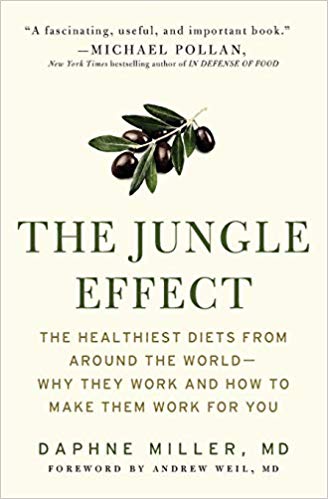A few years ago, I found myself on an appetizer kick. Before my family would sit down for dinner, I’d lay out a small spread of nuts, crackers, and pickles and invite Steve and boys to join me at the table.
When I first introduced the concept to our teenage boys, they eyed me suspiciously. I’d called them to dinner but all they saw were snacks. Sure, we occasionally order appetizers at restaurants. Often, it’s the only way to keep hungry boys happy as we wait for the entrees to be served. But at home? What was this all about?
“If we start with appetizers, it’ll stretch dinner out a little longer,” I explained. “You know, so we can all be together longer, and, oh, I don’t know, talk?”
“That’s kinda weird,” one son said.
“Yeah, we’re not a bunch of creepsters,” another added.
They picked around a little at the appetizer spread, and then announced they’d be up in their rooms until real dinner was ready.
“Well, it’s ready now,” I said, “as soon as we finish our appetizers.”
They just glared at me.
As it turns out, though my delivery could have been smoother, the instinct to slow down dinner actually taps into one of the common elements of healthy indigenous diets. According to Daphne Miller, MD, author of The Jungle Effect: The Healthiest Diets from around the World—Why They Work and How to Make Them Work for You, this principle shows up in a variety of ways in the world’s cold spots for (or places with far fewer than average cases of) many modern chronic diseases. In each of the five places Miller visited—Copper Canyon, Mexico; Crete, Greece; Iceland; Cameroon, West Africa; and Okinawa, Japan—not only were there common foods and ingredients among these various cultures, but also social customs and traditional practices that governed the ways people interact with and over food.
In Crete, for instance, the concept of “siga, siga,” or “slow, slow” in Greek, refers to eating at such a pace that you can actually take a breath between bites and enjoy what you’re eating. Since Cretans often eat in a style known as meze, where a group or family shares many small plates of food for their meal—similar to Spain’s tapas or China’s dim sum—eating slowly is the polite way to enjoy a meal, too.
Slow also showed up in Miller’s visit to Okinawa, where they practice a principle known as Hara Hachi Bu, or eating until you are eight parts full. Of course this principle addresses the issue of portion control, which is another commonality among Miller’s five cold spots, but it’s also speaks to slow eating, since in order to know when you feel satisfied, though not necessarily full, you have to consume food more slowly and mindfully, Miller says.
Other healthy traditions or habits that many of these disease cold spots share include regular walking, eating communally, drinking tea, and allowing the rhythm of feasts and fasts to allow occasional indulgence and periodically limit food intake.
Of course the five regions Miller visited also share a surprising number of common foods, ingredients, and cooking traits, despite spanning four continents. Many of them were expected, like eating multiple servings of fruits and veggies each day, limiting red meat and dairy, and drinking green tea. But a surprising commonality among these disease cold spots was their reliance on carbohydrates, which have gotten a bad rap among dieters and nutritionists alike in recent years, especially as they relate to many modern, chronic diseases.
But the carbs present in the diets Miller studied are not the typical carbs we eat at fast food restaurants or buy in the bakery section of our grocery stores. Instead, MIller emphasizes that the carbs in all five of these cold spot diets are slow-release carbs, which are fiber- and nutrient-rich, free of added processed fats and oils, in some cases uniquely antidiabetic, which make cells more sensitive to insulin, and slowly digested to prevent overstimulation of insulin and wildly varying blood sugar levels. Slow release carbs include whole grains, beans and other legumes, squashes, tubers, and more. Generally think of the brown or colorful versions of food over white versions: wheat bread, brown rice, and sweet potatoes, for instance. Also, since fiber helps with the slow release of carbs, eat vegetables and fruits that have edible peelings to increase your fiber intake.
How carbs are cooked also can make them more slow-release. Pastas and grains should be cooked al dente; potatoes should be boiled with skins on; and beans should be soaked. And what you add to carbs also can slow them down, too: some herbs and spices, like parsley and cinnamon, have slow-release properties, and when you add fermented foods, like vinegar or yogurt to carbs, it slows down the release of sugar.
For Your Consideration
Next week, we’ll read Chapter 10 through Appendix G and put these principles all together to talk about how to find an indigenous diet that works for you. But in the meantime, begin thinking about these non-food eating habits shared by disease cold spots around the world. Like my introduction of appetizers to slow down family dinners, which ones are you already doing or are you naturally drawn to? As well, look through the types of foods that commonly show up in these cold spot indigenous diets. Which ones are you already eating? Which ones do you naturally like? Before we consider changing anything about the way we eat, let’s discover ways we are already eating that might help us avoid or improve many of the modern, chronic diseases that plague our country, our families, and maybe even our own lives.
Want to join us? Here’s a schedule for past and upcoming reading and discussing:
Week 1 (January 22): Chapters 1-4: The Basics of Indigenous Diets and How They Work
Week 2 (January 29): Chapters 5-9: Specific Indigenous Diets and What They Have in Common
Week 3 (February 5): Chapter 10 through Appendice G: How to Find an Indigenous Diet that Works for You
Make Plans for Other Upcoming Winter Book Clubs at Tweetspeak
In 2020 we embark on our Year of Wisdom journey at Tweetspeak, and just as we approach everything we do here in a multi-faceted way, looking at any question from myriad angles—from the serious to the mischievous, from the forthright to the nuanced, from the erudite to the whimsical—our broad range of book clubs will help guide us in that journey from a variety of vantage points.


____
Photo by Lee, Creative Commons license via Flickr. Post by Charity Singleton Craig.
- Grammar for a Full Life Book Club: On Becoming Less Possessive - June 16, 2021
- Grammar for a Full Life Book Club: Chilling Out on the Grammar Rules - June 9, 2021
- Grammar for a Full Life Book Club: A Passive Voice - June 2, 2021


L.L. Barkat says
Oh, I think you were perfectly fine in how you presented your idea. What a beautiful effort you made! (I wonder if they’d be interested in taking on the challenge of making the healthiest, tastiest dinner appetizers? Maybe not, but given the choice, then perhaps they’d be more open to *you* preparing the appetizers?)
Anyhow. 🙂 I loved this section of the book. And you give us a terrific summary of its principles. I’m pondering so many aspects of Miller’s revelations that I’m not sure yet where I’ll land with some new habits. We are definitely eating more orange things now, though. And I’m contemplating using the numerous dried seaweeds I have tucked away in the top of one cabinet, to create some simple soups or stir fries. 🙂
Charity Singleton Craig says
Laura — I have felt the same way about not being sure what new habits I’ll ultimately integrate. I have started trying to include more fermented things with my carbs and I’ve been including more vegetables at breakfast. I’ve also made homemade tortillas a few times now, though I don’t yet have the knack for making them well. I’m also thinking more about where my fish comes from.
… and then there are all those non-food food changes, like slowing down how I cook and eat, thinking more about how much food I’m consuming — aiming for satisfied rather than full. And also thinking about the role of walking, observing rituals, drinking green tea, and others.
Next week, I talk about some of the practical challenges of finding an indigenous diet that works for us, though I think it’s as much about starting with the changes that are most aligned with how we already eat that will allow us to be successful.
And thanks for your encouragement about the appetizers. I kind of backed off of doing that after the boys protested so thoroughly a few times. But I think I’ll keep trying. We are a family that mostly eats dinner together every night, and our conversations at the table are the most in-depth we have. Stretching out that time is good for our relationships as much as our bodies.
L.L. Barkat says
All the non-food food changes. Yes! These, too, are intriguing to consider. (I keep thinking about that phrase siga siga. 🙂
Have you asked the boys straight out why they feel a sense of resistance about the appetizer idea? I’m always fascinated by what I find when I ask about a resistance (a relatively new practice of mine). Often it is not at all related to what I thought it was related to. And the asking itself often softens the situation and opens up new avenues.
Today I’m going to buy some buckwheat and grind it for a new kind of pancake experience. 🙂 Thank you, again, for opening new ways for my own food travels.
L.L. Barkat says
And I meant to add that I loved how Miller works *with* each client’s tastes and preferences instead of against them (the “dough baby” client was an especially notable case!). It seems to me that working with someone’s established tastes and preferences would exponentially increase the chance of long-term adoption of a healthier food lifestyle. This is definitely something I’m taking away for both myself and my girls as we go forward thinking about any alterations we might choose to make in our food ways. 🙂
Will Willingham says
I recall reading once upon a time about certain European diets which (at least in our perception) contain so many of the things that we consider to be indulgent or unhealthy (butter, breads, pastas, creams, etc.), and the author was poking into why they didn’t result in the same levels of disease and obesity in those countries. The answer posed had everything to do with siga siga: eating slowly, enjoying the food, allowing the body ample time to process and notify us of fullness.
Seems this concept alone could cure so many of our ills, food related or not.
Charity Singleton Craig says
I think you are so right, Will. I feel like I’m always rushed … sometimes I wonder what would have to change in me or around me for me to live (not just eat) at that slower pace.
Mary Van Denend says
Just trying to catch up a little here. I too appreciate Miller’s approach to finding what you like to eat, that’s also nutritious, and building on that. Rather than forcing someone to adopt a whole different diet they’re likely to give up on. Since my husband and I are empty-nesters, and have been for some time now, we don’t struggle with the kid resistance/dinner table habits that some in this group do. But we have tried to challenge ourselves to eat lighter on the food chain in other ways, and to take time to eat slowly. The biggest change we’ve made in the last year has been to eat vegetarian meals Mon – Thurs and have meat or fish only on weekends. We both love vegetables so it’s not that much of a hardship, but it does require more thought on my part (since I do most of the cooking). When we do have meat now it’s more of a treat than something routine. Mon-Thurs are the days when we exercise too so our new diet dovetails nicely with that. Apart from typical signs of aging like stiffer joints in the morning or where did I put my reading glasses? we’re both feeling healthier than we have in years.
Charity Singleton Craig says
Mary — I really love this idea of designating days when you eat meat and then seeing it as a treat. That’s very much in line with the cold spot diets Miller highlighted in the book. I follow a mostly vegan diet, and my husband and stepsons are carnivores. Maybe I could convince them to go meat-free on just one day a week … which would make cooking a lot easier for me on those days too.
Thanks for joining us for this book club!